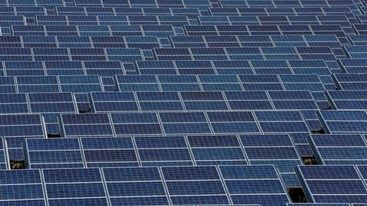Saturday, 20/04/2024 | 15:36 GMT+7
As digital technology becomes more ubiquitous and the Internet of Things takes shape, the question of how to power it all becomes more pressing. Japanese technology firm Ricoh is looking at its new "energy-generating rubber" as one solution. According the company, the new piezoelectric polymer converts pressure and vibration into electric energy with high efficiency, yet is extremely flexible and durable.
Piezoelectric materials come in two major forms; ceramics and polymers. Both are based on the principle of using mechanical strain to generate electricity and are used in electronics to provide power in specialized applications, such as vibration and pressure sensors. Unfortunately, both have their downsides. Ceramics convert vibration to energy with high efficiency, but they’re heavy, fragile, and often include toxic lead, while polymers are lighter, more flexible, and more durable, but not very efficient.

According to Ricoh, its new energy-generating rubber combines flexibility and high energy output. It's not only less fragile than ceramics, but it's also more flexible and durable than other polymers; surviving several million uses in testing. In addition, it's sensitive to light loads, yet generates high output under heavier ones.
Ricoh isn't giving much away about how the new rubber works, its composition, or specifications, but it does say that it's engaged in further research to produce a commercially viable version of the polymer for both sensors and energy applications.
Truong Duy








.jpg?w=367&h=206&mode=crop) Energy efficiency and conservation usage is an important aspect of the national energy development strategy
Energy efficiency and conservation usage is an important aspect of the national energy development strategy
 Challenges and Opportunities to promote energy efficiency market in Vietnam
Challenges and Opportunities to promote energy efficiency market in Vietnam
 The Ministry of Industry and Trade requests government agencies to coordinate in organizing Earth Hour 2024
The Ministry of Industry and Trade requests government agencies to coordinate in organizing Earth Hour 2024
 Consultation on Energy Efficiency Boiler Catalogue and Wood Drying Guideline
Consultation on Energy Efficiency Boiler Catalogue and Wood Drying Guideline
 Son Ha Co., Ltd, applies energy efficiency and conservation measures
Son Ha Co., Ltd, applies energy efficiency and conservation measures
 Phuc Kien Co., Ltd., is effectively implementing energy-saving measures
Phuc Kien Co., Ltd., is effectively implementing energy-saving measures
.png?w=367&h=206&mode=crop) Request for expression of interest - C2.1.13: Capacity Building on energy efficiency policies development
Request for expression of interest - C2.1.13: Capacity Building on energy efficiency policies development